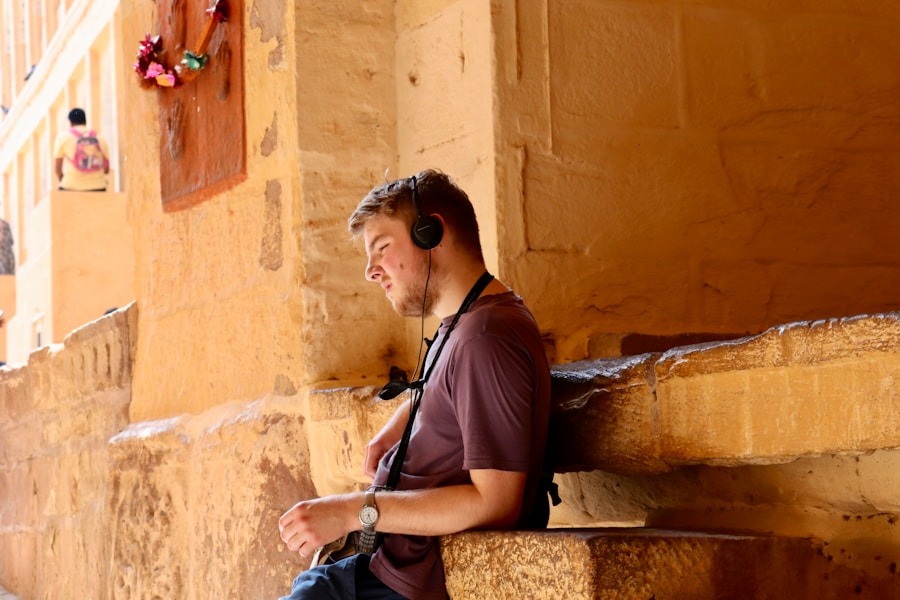Active listening is a fundamental skill that transcends mere hearing; it involves fully engaging with the speaker, understanding their message, and responding thoughtfully.
When individuals feel heard, they are more likely to express themselves openly, fostering an atmosphere of trust and collaboration. This is particularly vital in settings such as counseling, education, and team dynamics, where the exchange of ideas and emotions is paramount. Moreover, active listening contributes to conflict resolution.
By genuinely understanding the perspectives of others, individuals can navigate disagreements more effectively. For instance, in a workplace scenario where two team members have opposing views on a project, an active listener can facilitate a dialogue that allows both parties to articulate their concerns. This not only helps in finding common ground but also promotes a culture of respect and empathy.
The ability to listen actively can transform interactions, leading to deeper connections and more productive outcomes.
Key Takeaways
- Active listening is crucial for effective communication and building strong relationships.
- There are different types of listening, including informational, critical, and empathetic listening.
- Common barriers to effective listening include distractions, preconceived notions, and lack of interest.
- Strategies for overcoming listening barriers include practicing mindfulness, asking clarifying questions, and being open-minded.
- Nonverbal communication, such as eye contact and body language, plays a significant role in effective listening.
- Developing good listening habits takes time and effort, but it is essential for personal and professional growth.
Different Types of Listening
Informational Listening
One prominent type of listening is informational listening, which focuses on understanding and retaining information. This type of listening is often employed in academic settings or during professional presentations, where the listener’s goal is to absorb knowledge. For example, a student attending a lecture must engage in informational listening to grasp complex concepts and later apply them in assignments or exams.
Critical Listening
Conversely, critical listening involves evaluating the content being presented. This type of listening is essential in situations where the listener must assess the validity of arguments or claims. For instance, during a debate or a business meeting where proposals are being discussed, critical listeners analyze the information critically, weighing evidence and considering implications before forming an opinion.
Empathetic Listening
Another type of listening is empathetic listening, which prioritizes emotional understanding over factual comprehension. This form of listening is particularly important in personal relationships or therapeutic settings, where the listener aims to validate the speaker’s feelings and experiences.
Common Barriers to Effective Listening

Despite the importance of effective listening, several barriers can impede this vital skill. One significant barrier is environmental distractions. Noisy surroundings, interruptions from technology, or even visual distractions can divert attention away from the speaker.
For instance, in a bustling café, a conversation may be challenging due to background chatter and clinking dishes, making it difficult for listeners to focus on the speaker’s words. Another common barrier is preconceived notions or biases that listeners may hold. When individuals approach a conversation with fixed opinions about the topic or the speaker, they may unconsciously filter out information that contradicts their beliefs.
This selective listening can lead to misunderstandings and hinder meaningful dialogue. Additionally, emotional barriers such as stress or anxiety can also affect listening capabilities. When individuals are preoccupied with their own thoughts or feelings, they may struggle to fully engage with what others are saying.
Strategies for Overcoming Listening Barriers
To enhance listening skills and overcome barriers, several strategies can be employed. One effective approach is to create an optimal listening environment. This involves minimizing distractions by choosing quiet settings for important conversations and silencing electronic devices that may interrupt focus.
For example, scheduling a meeting in a private office rather than a crowded open space can significantly improve the quality of communication. Another strategy is to practice mindfulness during conversations. By being present in the moment and consciously directing attention to the speaker, individuals can improve their ability to absorb information and respond appropriately.
Techniques such as deep breathing or grounding exercises can help reduce anxiety and enhance concentration. Additionally, asking clarifying questions can also aid in overcoming barriers. When listeners seek clarification on points they do not understand, they demonstrate engagement and ensure that they accurately grasp the speaker’s message.
The Role of Nonverbal Communication in Effective Listening
Nonverbal communication plays a crucial role in effective listening, often conveying more than words alone. Body language, facial expressions, and eye contact are all integral components that signal attentiveness and understanding. For instance, maintaining eye contact with the speaker not only shows interest but also encourages them to continue sharing their thoughts.
Nodding in agreement or using appropriate facial expressions can further reinforce that the listener is engaged and empathetic. Moreover, nonverbal cues can provide valuable context to verbal messages. A speaker may express enthusiasm through animated gestures or convey sadness through a downcast gaze.
An effective listener must be attuned to these nonverbal signals to fully comprehend the emotional undertones of the conversation. For example, during a counseling session, a therapist who observes a client’s body language may gain insights into their emotional state that words alone might not reveal. Thus, integrating nonverbal communication into active listening enhances overall comprehension and connection between individuals.
Developing Good Listening Habits

Deepening Connections through Active Listening
By doing so, listeners can foster deeper connections and demonstrate respect for the speaker’s thoughts. Another important habit is to reflect on what has been said before responding. This involves summarizing key points or paraphrasing the speaker’s message to ensure accurate understanding.
Practical Strategies for Effective Listening
For instance, after a colleague presents an idea during a meeting, taking a moment to restate their proposal can clarify any misunderstandings and show that their input is valued. Additionally, seeking feedback on one’s listening skills from trusted peers can provide insights into areas for improvement. Engaging in regular self-reflection about listening experiences can also help individuals identify patterns in their behavior and make necessary adjustments.
The Power of Good Listening Habits
Ultimately, cultivating good listening habits leads to more meaningful interactions and stronger relationships in both personal and professional spheres. By understanding different types of listening and recognizing common barriers, individuals can develop effective strategies to improve their listening abilities. Nonverbal communication further enriches this process by providing additional layers of meaning to conversations.
In a related article on Yimho, a comprehensive overview of microbes is provided, detailing their types, roles, and significance in various ecosystems. Understanding the importance of microbes can help us appreciate the complexity of the natural world and how different organisms interact with each other. To read more about this fascinating topic, check out the article here.























+ There are no comments
Add yours